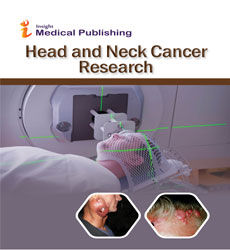Abstract
Clinico pathological analysis of change in voice in Indian population
Introduction: The human voice is an extraordinary attainment, which is capable of conveying not only complex thought but also subtle emotion. At every childbirth the most singularly and universally awaited sign of life is the infant’s cry. The cry signals a fulfilled physiological capability required for the infant’s survival. Probably no other human organ system needs work so immediately and effectively after birth. “Although the voice is not visible to the eyes during speech production but its absence or malfunction is obvious”. Hoarseness is a coarse, sound most often associated with abnormalities of the vibratory margins of the vocal folds, in condition like laryngitis, vocal fold hemorrhage, mucosal disruption, mass lesions and carcinoma. Hoarseness lasting longer than 2 weeks must be evaluated completely. Hoarseness of voice is one of the commonest symptoms in ENT practice and it indicates diseases ranging from totally benign condition to the most malignant condition. Benign lesions are
numerically more common causes of hoarseness than malignant diseases. To listen the spoken voice is the only way to identify hoarseness. It is often the first and only signal of serious local or systemic disease.
Aims and Objectives: To study etiology, associated symptomes, predisposing factors in respect with age & sex. Materials & Methods: We studied 50 patients of hoarseness of voice irrespective of their age, sex and duration of disease. Thorough history, clinical and ENT examination was be done. Followed by appropriate investigation, analysis & treatment.
Conclusion: Most common causes were chronic laryngitis, voice abuse and GERD. It was commonly seen in labours.
Author(s):
Nayanna Karodpati
Abstract | PDF
Share this

Google scholar citation report
Citations : 28
Head and Neck Cancer Research received 28 citations as per google scholar report
Abstracted/Indexed in
- Google Scholar
- JournalTOCs
- China National Knowledge Infrastructure (CNKI)
- WorldCat
- Publons
- Secret Search Engine Labs
Open Access Journals
- Aquaculture & Veterinary Science
- Chemistry & Chemical Sciences
- Clinical Sciences
- Engineering
- General Science
- Genetics & Molecular Biology
- Health Care & Nursing
- Immunology & Microbiology
- Materials Science
- Mathematics & Physics
- Medical Sciences
- Neurology & Psychiatry
- Oncology & Cancer Science
- Pharmaceutical Sciences


